
An old wheel from a Pelton turbine is located outside Aura power plant at Sunndalsøra in Sunndal Municipality in Møre og Romsdal County.
Renewable: New turbine technology will make hydropower more flexible
Most hydropower turbines should not run below 60% power production capacity. Failure to do so may damage the turbines. Statkraft is participating in two international research projects that will improve the turbines and make hydropower more flexible.
Sun and wind provide affordable, clean and renewable energy, but its production is determined by the weather, not by need. That is why we need other energy sources that can create a balance between supply and demand.
In the world of renewable energy, adjustable hydropower is the most suitable option, but even hydropower is not flexible enough in all situations. This may now change.
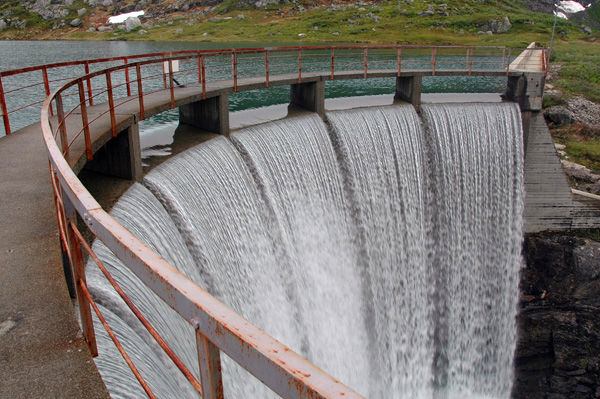
International research collaboration
The Francis turbine, which is the most common turbine in hydroelectric power plants, is best operated at full load, i.e. with maximum water flow and water pressure. If there is too little water, turbulence and pressure fluctuations can form in the water that can quickly damage the turbine.
"This means that the turbines must either be run at close to design loads or stopped completely, which reduces the flexibility of the power plant," says Erik Jacques Wiborg in Statkraft. He is a turbine expert and the internal project manager for Statkraft in two research projects, AFC4Hydro and HydroFlex, under the EU framework programme Horizon 2020.
The two projects have slightly different approaches but both are aimed at making hydropower plants more flexible. Industry partners and research institutions from several countries are participating in the projects.
"Increased flexibility will make it easier to use adjustable hydropower even with larger, faster and potentially short-term fluctuations in wind and solar energy production. Today, lithium battery is about the only technology suitable for that job," says Wiborg.
Many hydropower plants must meet minimum water flow requirements in the watercourse downstream from the power plant, which means that they often have to divert water around the turbines.
"Due to the technical limitations of the power plant, we can't always use this water for power generation, at least not without significantly reducing the service life of the turbine. With new or improved turbines we will be able to run hydropower plants at lesser loads and increase the reaction time of the machines," he explains.
Counter-flow technology
The AFC4Hydro project will develop technical solutions for the gentle operation of turbines under adverse loads. The goal is to increase the service life and flexibility of existing turbines. The project will further develop a technology that Statkraft previously helped develop with Flow Design Bureau and Troms Kraft Energi (see video below).
"This is a system where we inject water to counteract swirling flow and pressure fluctuations that can damage the turbine. Today's system works, but it has the potential for improvement. We are working on a solution where we can adjust the angle of the nozzles that inject the water, which will improve effect and reduce water consumption," explains Wiborg.
"We are also testing a technology using mechanical pistons downstream from the turbine runner. These can create positive or negative pressure that counteracts pressure fluctuations in the water. Time will show what works best under different conditions," he adds.
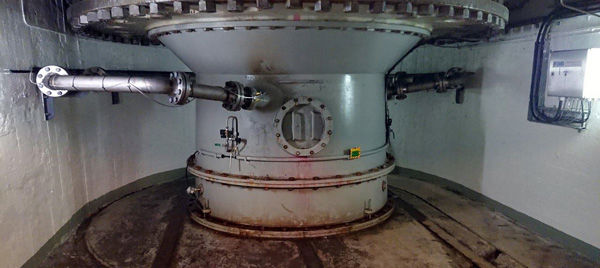
Newly developed turbine
The second project, HydroFlex, focuses on designing turbines and associated systems that can withstand faster starts and stops several times a day.
"It is the response time that prevents hydropower from offering the same flexibility as batteries," says Wiborg.
The HydroFlex project will further develop turbines, generators and transformers that can respond faster.
"As an important environmental measure, we will develop a system in the same programme that will reduce the effect of frequent changes in water flow downstream from the power plant. Just as with noise-cancelling headphones, counter-waves must be created that neutralise the fluctuations coming out of the plant. This will make the water flow in the river more constant, even if we stop and start production more often," says Erik Jacques Wiborg.
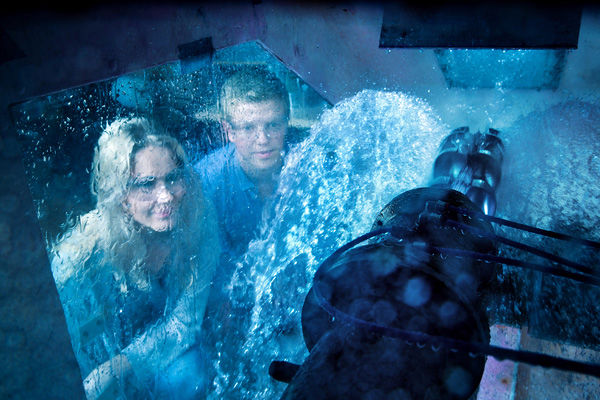
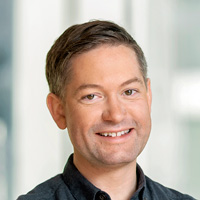
Erik Jacques Wiborg
Erik Jacques Wiborg is a technical specialist in hydropower turbines in the Electro & Mechanical unit in Statkraft's Nordics business area.
Different turbine types
The Francis turbine is just one of several turbine types used in hydropower plants. Turbine selection is based on height of fall and water flow fluctuations in the watercourse where the power plant is located.
Francis
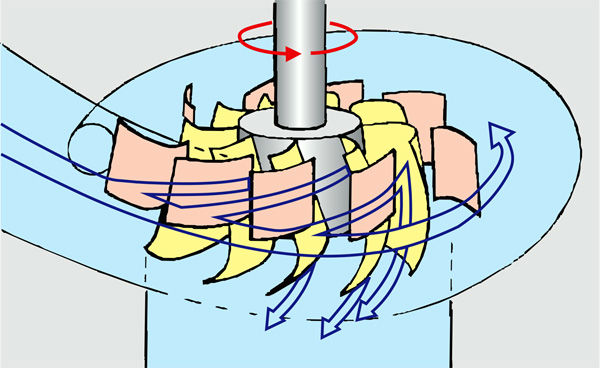
Francis turbines are suitable for a height of fall of between 50 and 750 metres and are the most widely used turbines in Norwegian hydropower plants. With this turbine the water enters radially onto the turbine wheel and leaves the turbine axially through the discharge (see illustration). The turbine is named after American engineer James Bicheno Francis (1815-1892), who invented the turbine in 1849.
Kaplan
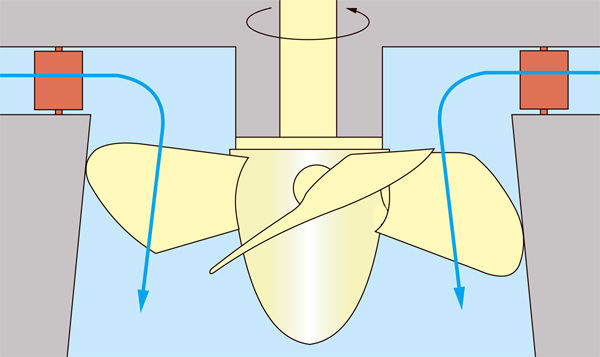
Kaplan turbines are used for small and varying heights of fall and higher rates of water flow. These are widely used in run-of-river power plants because they are effective with varying rates of water flow. The turbine wheel is shaped like a propeller where the propeller blades can be adjusted according to water volume and water pressure (see illustration). Austrian engineer Victor Kaplan (1876–1934) invented this turbine in 1912.
Pelton
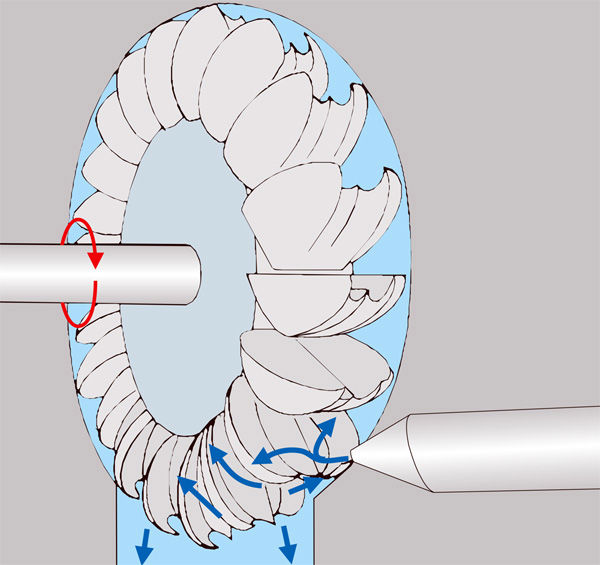
Pelton turbines have vanes that receive water injected from one or more nozzles onto the turbine wheel (see illustration). This turbine is commonly used in hydropower plants with a height of fall over 400 metres. The Pelton turbine was developed in the 1880s by American Lester Allen Pelton.
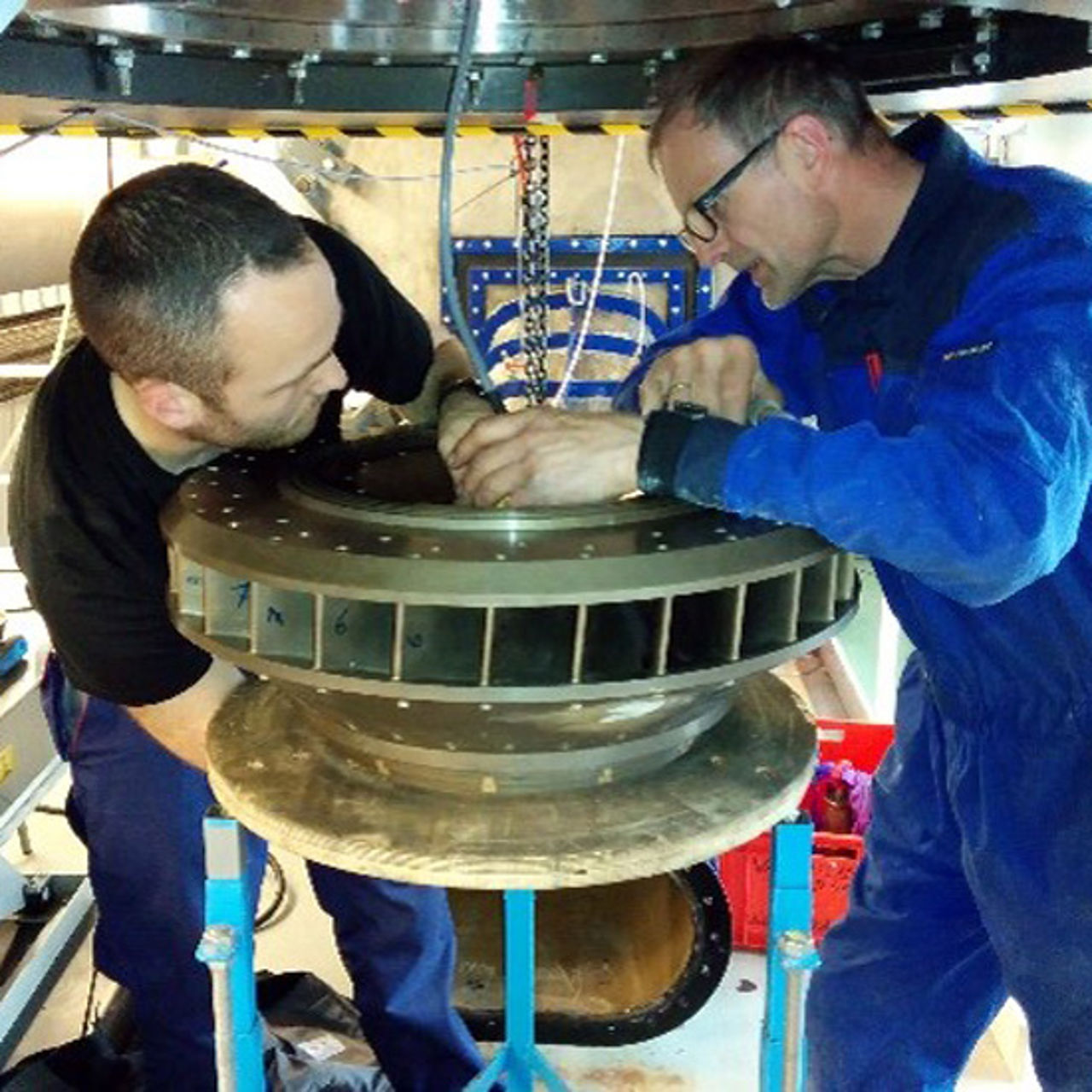
Turbine model testing in the Waterpower Lab at The Norwegian University of Science and Technology (NTNU) in Trondheim.
Horizon 2020
Horizon 2020 is the EU's eighth framework programme for research, technology development and innovation. The EU and the EEA together invest almost NOK 80 billion in the program. The main objective is to respond to some of the challenges that followed in the wake of the financial crisis in Europe in 2008–2009. The programme aims to link research and innovation, focus on major societal challenges, coordinate national programmes in Europe (ERA) and thereby strengthen Europe's global position in research, innovation and technology. One of the major challenges Horizon 2020 addresses is global climate change, which requires measures through increased access to clean and renewable energy.
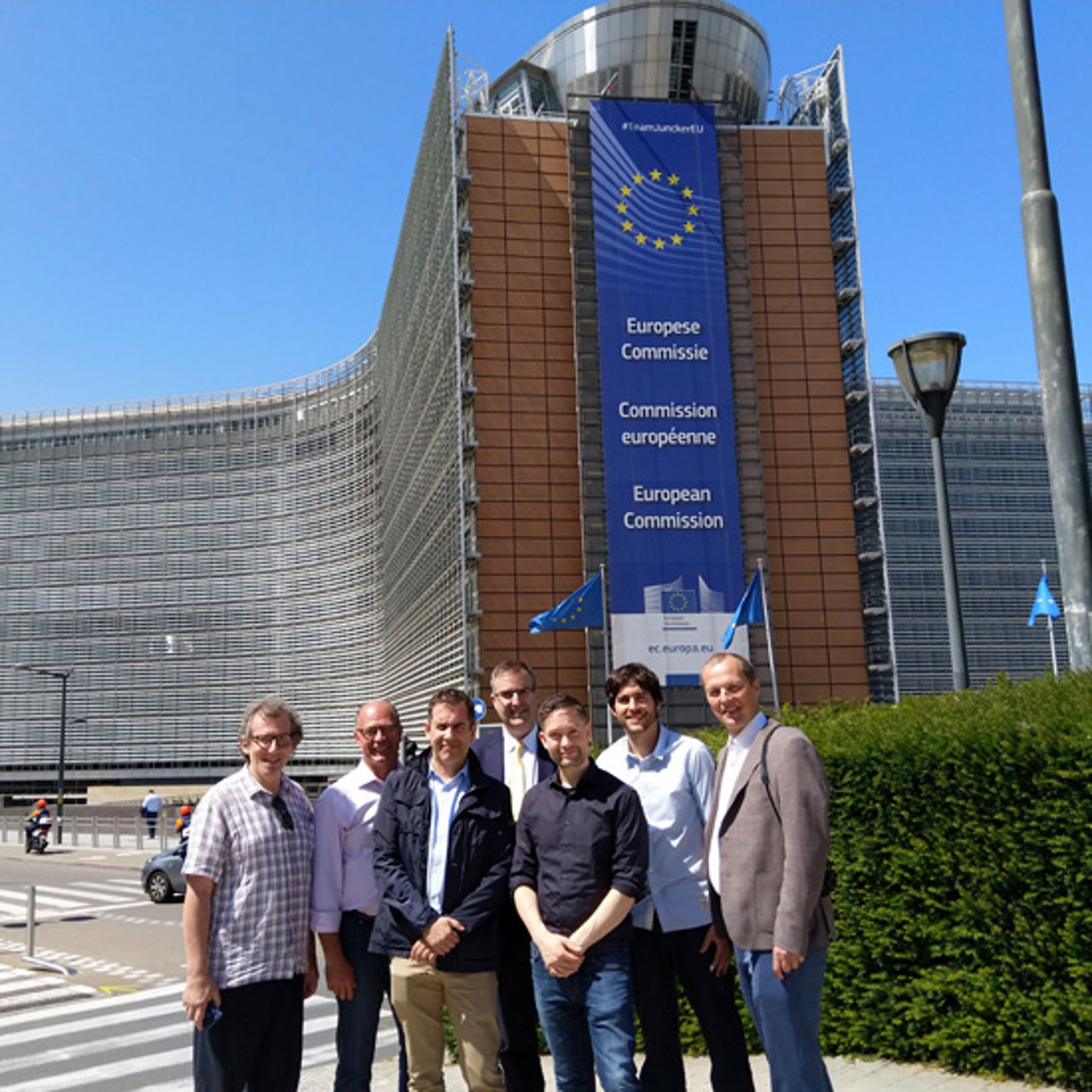
Participants in the AFC4HYDRO project in front of the EU Commission's building in Brussels. From the left: Malcolm Burns (Universitat Politècnica de Catalunya, UPC), Carl-Maikel Hogstrom (Vattenfall), Michel Cervantes (Luleå Technical University), Xavier Escaler (UPC), Erik Wiborg (Statkraft), Oscar De La Torre Rodriguez (UPC), Morten Kjeldsen (Flow Design Bureau).
Important research projects
Statkraft is participating in two research projects under the EU framework programme for research and innovation, Horizon 2020. Through innovation and technological development, both projects will make hydropower plants more flexible.
-
The aim of the HydroFlex project is to make scientific and technological breakthroughs that will enable hydropower to operate with very high flexibility in order to fully utilise power and storage capacity. The project is led by the Norwegian University of Science and Technology (NTNU).
-
The AFC4Hydro project researches and develops technical solutions for the gentle operation of turbines under adverse loads, with the aim of increasing the service life and flexibility of existing turbines. The project is led by Universitat Politècnica de Catalunya (UPC) and Barcelona Tech.